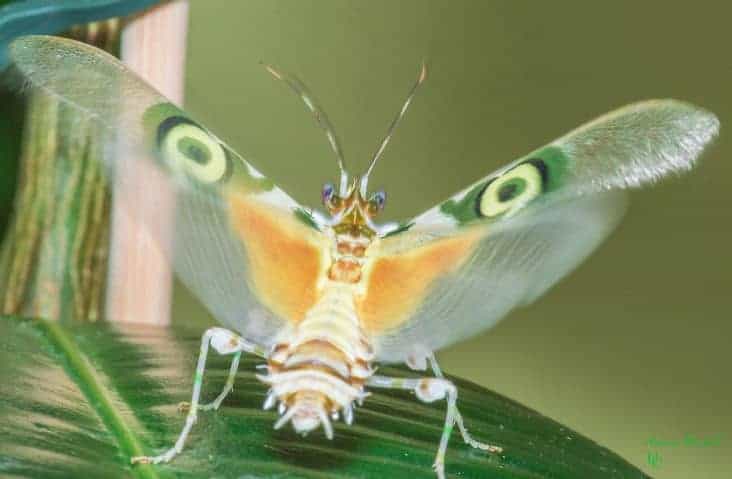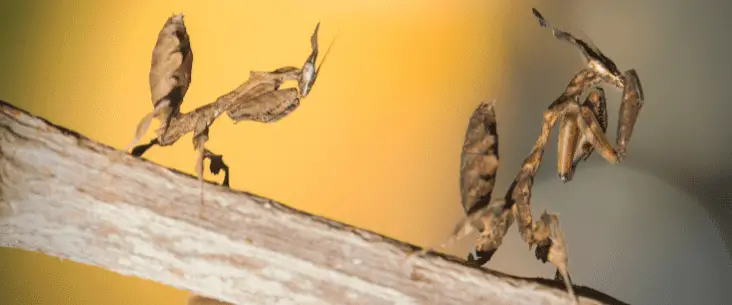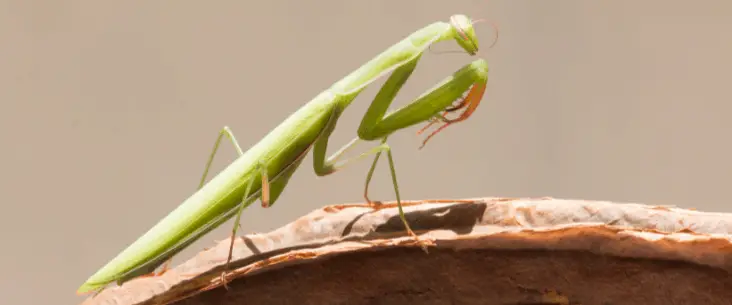Many praying mantis species have some sort of wings. However, you see them only sitting and resting, waiting to ambush prey when it is in close proximity. But do praying mantis use their wings? Did you ever wonder if a praying mantis can actually fly? We will have a closer look at the wings of praying mantis and their ability of flying.
Several praying mantis species with fully developed wings can fly. With most mantis species, it is only the male that actually flies, although there are some species where the female can fly too. However, praying mantis use their wings for much more than flight alone.
Not all praying mantis have fully developed wings, and many mantises use their wings for more than flying alone. There is much to discover about the praying mantis flight and the structure of wings. If you want to know more, keep on reading!
Curious about keeping praying mantis as a pet?
Praying mantis make great pets. They are low maintenance and easy to keep animals and beautiful in their own way. Are you interested in keeping praying mantis as a pet? If you do check out our basic guide for keeping and caring for a praying mantis. It is packed with practical information and good practice tips to get you started keeping these amazing animals at home.
Why do praying mantis fly?
Yes, praying mantis can fly and some are quite good at it. Especially males can fly long distances. But, as you might know, praying mantis are animals that will be sitting a long time on the same spot and ambush prey rather than hunt for it. So why do praying mantis fly?
In general, flying enhances the acquisition of resources, the dispersal of species and is used to evade or escape predators. Praying mantises fly mostly in for the search of a mate to reproduce.
With that logic, it also makes more sense then that males often have fully developed wings or possess the ability of flight. It is the males that are searching for a female. With wings, you can travel greater distances more easily, and cover more ground to search for a potential mate. This is especially useful when the species is less dense in the area.
Male praying mantis are regular smaller and thinner — especially the abdomen — making it easier for them to fly and they can fly longer distances. The ratio between body mass and wing size is less than females, which means the wings have to lift less weight.
Not all praying mantis have fully developed wings (also called macropterous or long-winged). Some species have short wings, several species have vestigial wings, and some are even wingless. If a praying mantis has wings, they consist of two sets of wings. The forewings cover the actual wings — the hindwings. Hind wings (these are used for flying and gliding) are delicate and are therefore protected by more leathery wings.
Females usually cannot fly with their wings. That raises the question of why females have wings in the first place? Where are they use them for?
Related read: Do Stick Insects Fly? A Look At Their Use Of Wings
More than flying alone!
Wings are used for more than flying. Some praying mantises use their wings to glide, instead of flying. This way, they can move greater distances without the use of much energy.
But, when you look at many different mantis species, you see that many have beautiful bright coloured wings and patterns. And no, this is not to look more beautiful. It is also not used to impress females. No, it is completely the opposite.
These colourful wings are used to scare off predators or rival mantises. They spread their wings and forearms, which make them appear much larger and rather imposing. For example, the spiny flower mantis (Pseudocreobotra wahlbergi), use this deimatic display to startle predators.
Some praying mantises use their wings as part of their camouflage. Some species even developed such good camouflage that it attracts certain insects, making it easy for them to ambush these prey.

Do pet praying mantises fly at home?
But, do pet praying mantis fly at home? Even praying mantises that can fly, don’t usually fly when you keep them as a pet. The main reason is that they don’t have to.
As long as your praying mantis is in his enclosure, it has no perks for it to fly. The distances that it wants or need to travel are too short, so it will just walk from one point to another. Also, for hunting, mantises don’t need to fly. It peacefully waits until the prey is close enough to catch.
It is different when you take your praying mantis out of its enclosure. When it likes to it can fly from one spot to the other. Or it will fly from your hand to your other hand (often when you have delicious prey in your other hand). That is one of the reasons you can’t keep flying mantises (most of the species) in an open enclosure. It will simply fly away, and you will quickly be unable to find it anymore.
When you decide to handle your praying mantis, make sure you have closed all the windows and doors before taking your mantis out of its enclosure.
Related read: How To Tell If A Praying Mantis Is A Male Or Female?
Keeping praying mantis as pets
Are you interested in keeping a pet praying mantis? They make great pets and are easy to take care of. But, just like any other pet animal, it is important to be prepared and understand how you need to keep them. Check out our basic guide on keeping and caring for praying mantises. You can find all the information you need and is packed with many practical tips.
Share this page!



